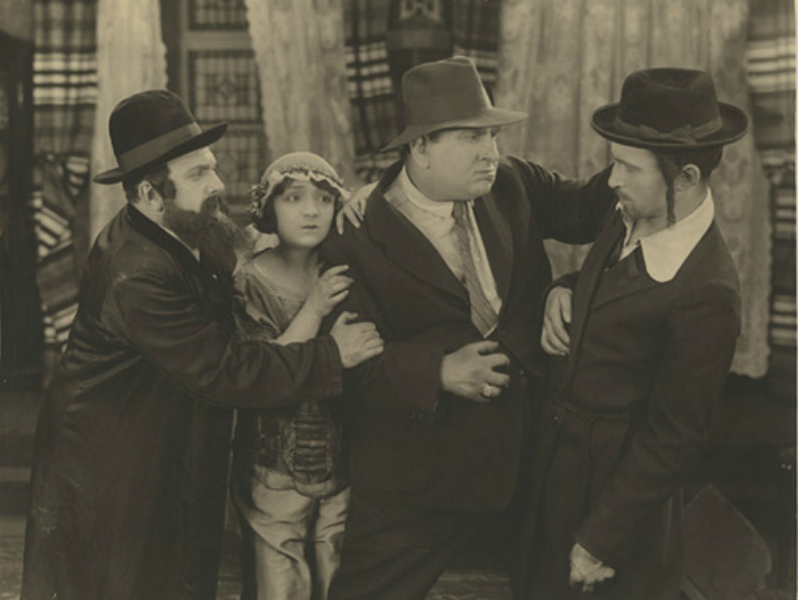Chaverim! Yidn! Landslayt! Gevalt, have we got tsuris! Oy vay iz mir.
Jews in Canada are losing their Yiddishkeit. High rates of assimilation and intermarriage and the increasingly liberal trends in religious practice, combined with low birth rates and the high cost of Jewish living, have put Canadian Jewry in jeopardy of future extinction due to loss of identity.
Religion and language are the two most important factors for bonding Jews together as a people. Accordingly, a strong argument can be put forward for considering a renewed focus on the Yiddish language. Indeed, there was a culturally productive period in their history when millions of Jews in the Diaspora communicated with each other verbally and by the written word using Yiddish as their mama loshen (mother tongue), while reserving Hebrew, the language of the Torah, as their loshen koydesh (holy tongue), for prayers and religious study. Moreover, Yiddish is a charming and expressive language, fun to learn because of its colourful vocabulary and valuable as a second language for Canadian Jews to converse with one another and with other Yiddish-speaking Jews in foreign lands.
In the 19th century, talented Jews initiated the use of the Yiddish language in the creation of literature, poetry, drama, music and religious and cultural scholarship. Yiddish, for the first time, was used to communicate and illustrate the vibrant Jewish life existent in the ghettos and shtetls of eastern Europe. Jews had previously limited the use of Yiddish for everyday speech and writing; now Yiddish had won acceptance as the language of choice for recording Jewish cultural elements.
What followed was nothing short of spectacular. Solomon Naumovich Rabinovich, better known by his pen-name Sholem Aleichem, and Isaac Bashevis Singer, who was awarded the Nobel Prize in literature in 1978, led the way for Yiddish literature, along with Isaac Leib (I.L.)Peretz, considered the first true modernist in Yiddish literature. A Yiddish theatre developed with significant contributions from Abraham Goldfaden, considered the Father of Yiddish Theatre, Jacob Michailovitch Gordin, a Yiddish playwright known for introducing realism and naturalism into Yiddish theater, and Boris Thomashefsky, who became one of the biggest stars of the Yiddish theatre.
Along the way, there were important milestones in Yiddish cinema, too: Zayn Vayb’s Lubovnik (His Wife’s Lover), the first full-length sound feature film in Yiddish starred Ludwig Satz, a Yiddish comic actor; Yidl Mitn Fidl (Yiddle with His Fiddle), a musical which became a worldwide hit among Yiddish audiences and one of the best-known examples of Yiddish cinema; Tevye, a film based on Sholem Aleichem’s famous character, Tevye the dairyman (who was,of course, also the subject of the popular musical Fiddler on the Roof) was directed by and starred Maurice Schwartz, a Yiddish stage and cinema actor.
Yiddish music also became a pillar of Jewish culture. Bay Mir Bistu Sheyn (To Me You Are Beautiful), composed by Sholom Secunda, was a hit both in the original Yiddish language and then in the English version (which had the same title). Ich Hob Dikh Tsufil Lib (I Love you Too Much), by Alexander Olshahetsky, was a hit both in the original Yiddish language and then in the English version, I Love You Much Too Much. So was Abe Schwartz’s Di Grine Kuzine (The Greenhorn Cousin).

Great Yiddish performers, like Aaron Lebedeff, who wrote and sang Rumania, Rumania, and Molly Picon, who had the lead role and sang in the classic, Mamele (Little Mother), the last Yiddish film made in Poland before the Holocaust, delighted audiences. So too did Seymour Rexite (originally Rechtzeit), a child prodigy who became a crooning sensation, and his beautiful wife, Miriam Kressyn, who, for her husband, wrote Yiddish lyrics to popular English language songs. They sang a playful duet on their recording Beyt Mikh A Bisele Mamele (Coax Me A Little Bit, Dear).
READ: INSIDE THE BURGEONING YIDDISH RENAISSANCE
Prior to the Second World War, there were between 11 to 13 million people globally who spoke Yiddish. During the Holocaust, six million Jews perished; five million of those Jews, approximately 85 per cent of the victims, were Yiddish speakers. Consequently, there was a very sudden decrease in the usage of Yiddish on account of the destruction of religious and secular communities where it had flourished. After the war, assimilation resulted in an additional decrease in Yiddish usage both among survivors and those who spoke Yiddish in other countries, such as Canada, United States and the Soviet Union. Meanwhile, the Zionist movement wanted Hebrew as the official language of the Jews and, therefore, tried to suppress the use of Yiddish. Unfortunately, it seemed Yiddish had become yet another casualty of the Holocaust.
Since a resurgence of the Yiddish language has the potential for bonding Canadian Jews together as a people, Canadian Jews should explore valuable contributions from the past made to Yiddish literature, theatre and music by Jews worldwide and, in so doing, experience the characteristic resilient, indomitable Jewish spirit permeating the rich culture of Yiddish-speaking Jews.
Yiddish could be the decisive factor if employed by concerned Canadian Jews in the struggle to retain their Yiddishkeit. Yiddish, an important element for bonding Jews together as a people, has been allowed to lay dormant for far too long. Now, it is impatiently waiting to be awakened from its involuntary slumber. To revive the language is to rekindle interest in Yiddish culture and, consequently, in Judaism and Jewish life.
Zay gezunt.
